The world’s vultures are in crisis. Of 22 species worldwide, 75% are in decline. According to the International Union for the Conservation of Nature’s red list, nine species are critically endangered, three are endangered, four are near threatened, and only six are of least concern.
Vultures fill a unique ecological niche. They eat carrion very efficiently and they don’t eat anything else (well, almost never) – scientists call them obligate scavengers. Losing them impacts people in a very direct and unexpected way.
The good news is that most vulture declines have a known, preventable primary cause.
“Generally, around the world vultures are being poisoned — some intentional, some not.” says Evan Buechley a post-doctoral researcher at the University of Utah. “People see vultures here and think they’re fine – maybe ugly. But globally, they’re the most endangered group of birds, many are critically endangered and they’re really important. If vultures weren’t here, there would be many repercussions including increased risk of human disease.”
Buechley is leading a project with HawkWatch International and the University of Utah to research vulture ecology in the Horn of Africa, potentially one of the last strongholds for African vulture species.
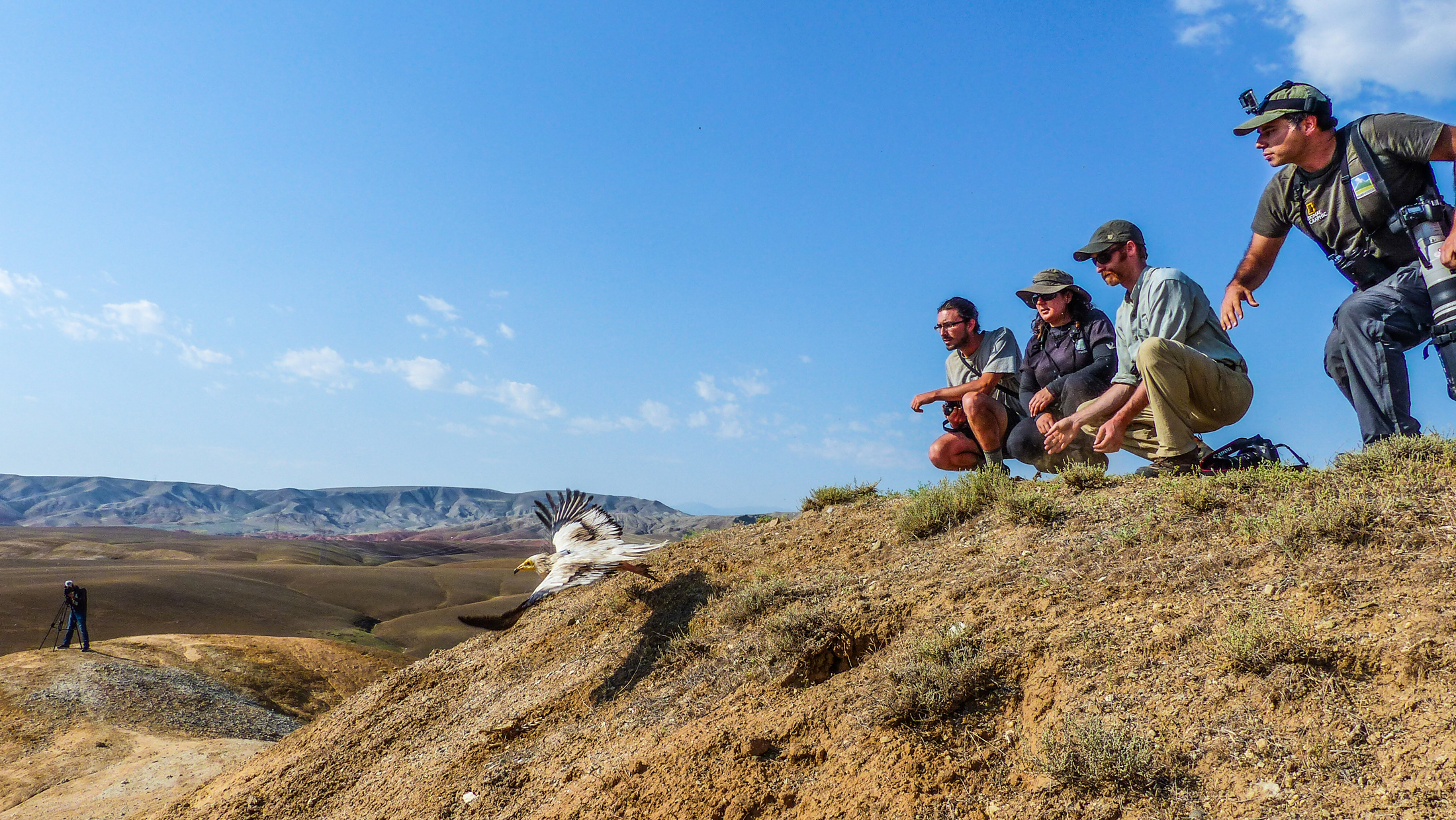
Killing off the world’s vultures can come back to bite people — literally — in the form of rabid dogs. One study in India and Pakistan found that a 99.9% decline of vultures over the course of roughly a decade correlated with an increase of 7 million in the feral dog population. Over this period there were 39 million dog bites in the region, which led to an estimated 48,000 human deaths from rabies.
A recent article on the vulture crisis coauthored by Buechley found that toxins are the leading cause of decline for 88% of at risk vulture species. You’ve probably heard about lead poisoning in California condors and catastrophic declines induced by diclofenac poisoning in South Asia.
Poisoning is also a rising threat to several African vulture species. These vultures are sometimes unintentionally poisoned when they eat carcasses of wildlife (like lions and hyenas) that were poisoned in retaliation for eating livestock and at other times intentionally poisoned by poachers hoping to avoid detection — vultures gather overhead so quickly that they can tip off rangers to the location of a kill before poachers can get away clean.

“Vultures eat communally and are very sensitive to poison so a large poisoned carcass can have a big impact,” Buechley says. “A single poached elephant in Namibia killed 600 vultures from that one poisoned carcass.”
The countries of South Asia have put policies in place to stabilize vulture populations and India has an ambitious plan to restore vulture populations over the next decade. In Africa, however, many vulture populations are understudied and those studies that have been published on the declines of vultures and the impacts of removing vultures from the ecosystem in Africa come from only a few countries.
Saving Vultures in the Horn of Africa
Ethiopia, located in the Horn of Africa and containing the headwaters of the Blue Nile, may be one of the last strongholds for Africa’s vultures. Seven species of Old World Vultures can be found there. Three – the near threatened bearded vulture, endangered Egyptian vulture, and critically endangered hooded vulture – are found in what may be their highest population densities in Ethiopia.

However, very little is known about the vultures of this region, Buechley’s project will be the only ongoing research into vulture ecology in the Horn of Africa. His team will be the first to set data-driven baseline population levels for Ethiopia’s vultures to find out whether vulture populations in the area are declining and, if so, why.
Researchers will combine data from old-school road and point counts of raptor species with high tech modeling based on the GPS coordinates where those raptors were seen and spatial attributes of the locations (habitat, elevation, human presence, etc) to estimate population numbers across the region.
At the same time, the team will place camera traps at abattoirs (slaughterhouses) across Ethiopia. Abattoirs are ideal places for counting gathered vultures and studying vulture interactions with other scavengers like feral dogs, hyenas, and storks.
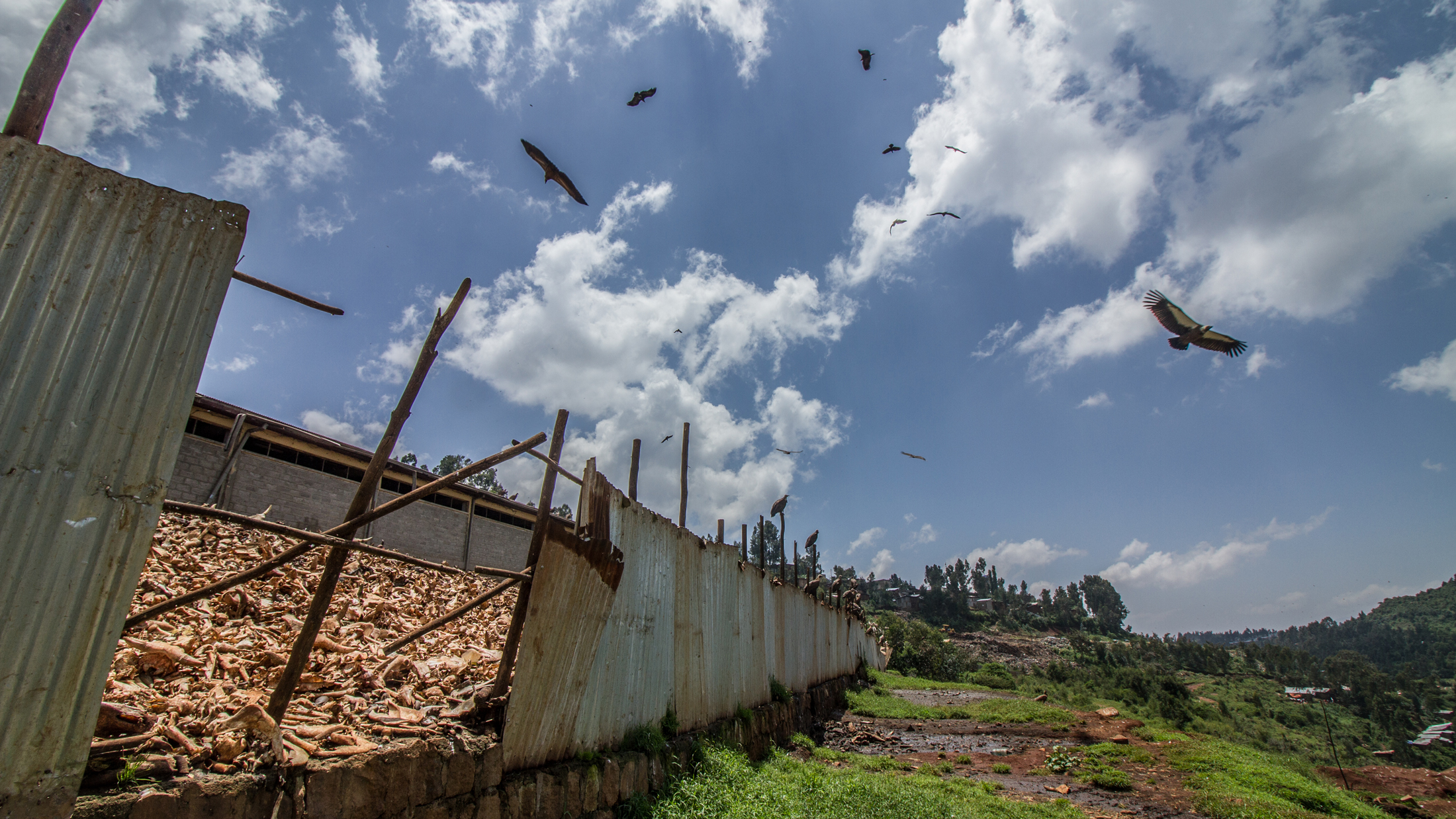
“Cameras gather data even when we can’t be there,” Buechley explains. “We can use them to monitor vulture activity and fluctuation in numbers throughout day, week, month, and year, as well as the activities between scavengers — without the disturbance that is caused by having a human observer present.”
Scavenger interactions caught on camera will also provide insight into what the ecological repercussions of a vulture decline would be with emphasis on the relationship to feral dog populations. Differences in the locations and set up of the abbatoirs will add to the experiment – factors like climate and enclosures that exclude mammalian scavengers will be taken into account.
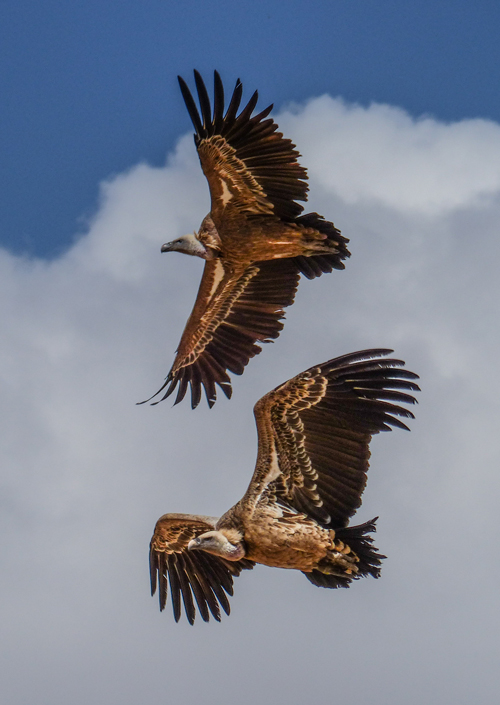
“People are very concerned and scared about feral dogs,” Buechley says. “There’s a trade-off competition between vultures and dogs. As we see increases in dogs at abattoirs, vultures decline. There are two ways to look at that. Vultures are efficient at eating carrion and regulate dogs. However, once dogs are established they outcompete vultures. They’re bigger, stronger and pack up to chase vultures off.”
Abbatoirs, even in Addis Ababa – a city of over 3 million people – throw out animal remains and rely on vultures to clean up the waste and bones before they dispose of them.
“In places where dogs become dominant that service is highly reduced,” Buechley explains. “Dogs eat some of the waste but not as efficiently and effectively as vultures. If vultures decline feral dogs will likely increase, as seen in India, and this is a health risk.”
It is not yet known the extent to which poisoning is a threat to vultures in Ethiopia – some municipalities were using poisoned meat to cull feral dogs, but they are in the process of looking for an alternative that won’t harm vultures.

Buechley’s project will build knowledge and conservation capacity for vultures in the Horn of Africa – enlisting local people to perform much of the work. By getting ahead of the problems with poisoning that have plagued other countries in Africa and around the world, the team hopes to conserve this stronghold of vultures before it’s too late.
Vultures Do Scavenging & They Do It Better Than Anyone
Vultures are efficient and effective carrion disposal machines. They may look “ugly” to some people, but their adaptations to eat carrion (and only carrion) help to stop the spread of disease.
Replacing vultures in an ecosystem with other scavengers is like replacing your best scissors with child-safe scissors – sure, they “can” cut paper, but they’re going to leave a mess.
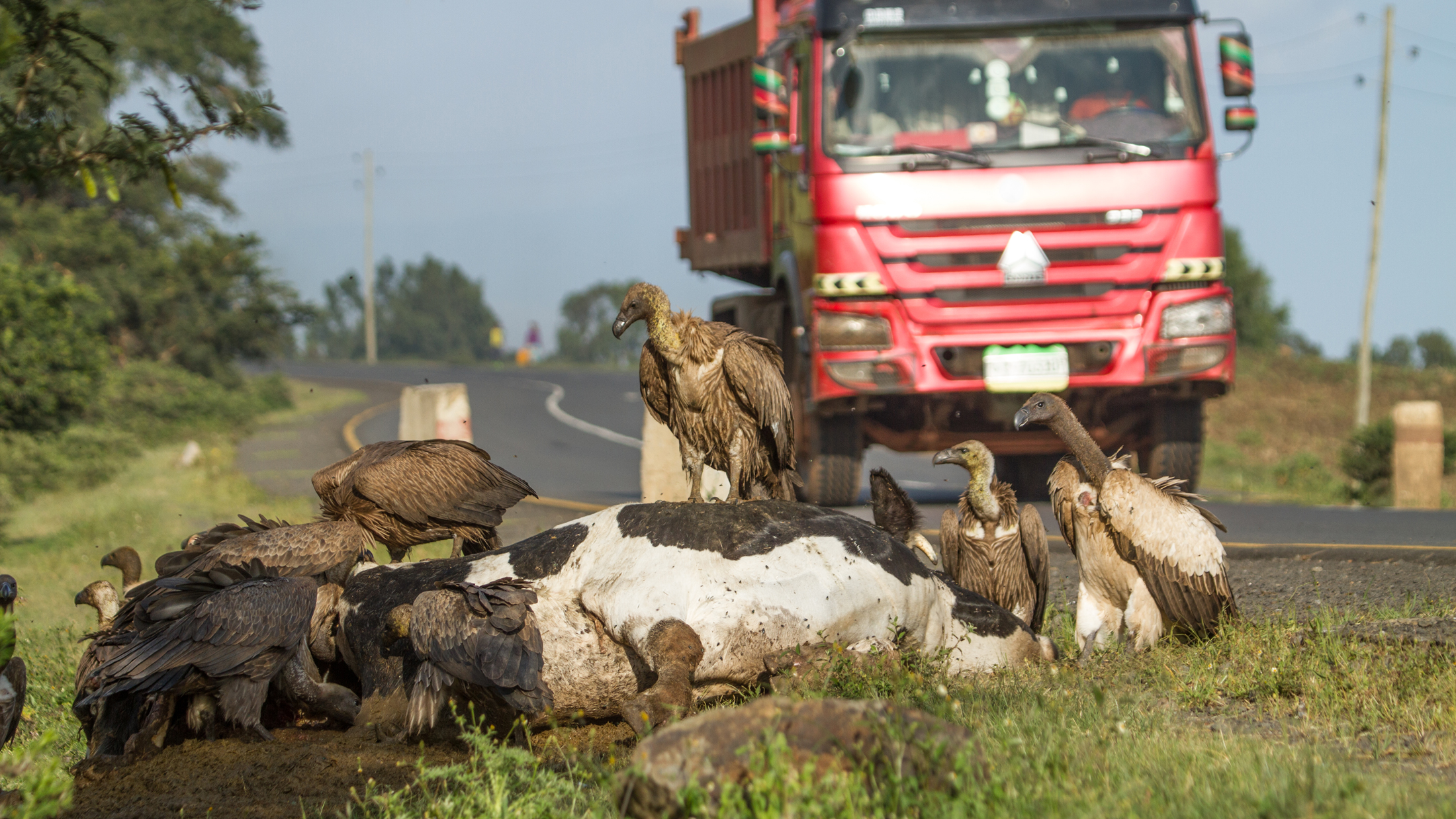
Old World Vultures of Africa locate carcasses primarily by sight, and yet, they are able to find large carcasses quickly – they can usually locate an elephant within 30 minutes of its death. They then set to work tearing apart the carcass. Each bird can consume about two pounds of meat per minute. Together they can pick a carcass clean in hours.
Since carrion is the only thing on the menu vultures don’t let any go to waste. When they have finished eating there is nothing but bone. Some even eat the bone. That means no meat is left to rot and spread disease or to attract other scavengers into groups where diseases like rabies can be quickly spread to multiple individuals.
Carcasses are a vector for diseases like ebola, plague, anthrax, and rabies. Vultures’ stomach acid has a very low pH – as low as 1 (human stomach acid averages around 2). Their digestive tracts may even destroy these diseases, not only keeping the vulture safe and healthy, but also removing the disease threat from the ecosystem.
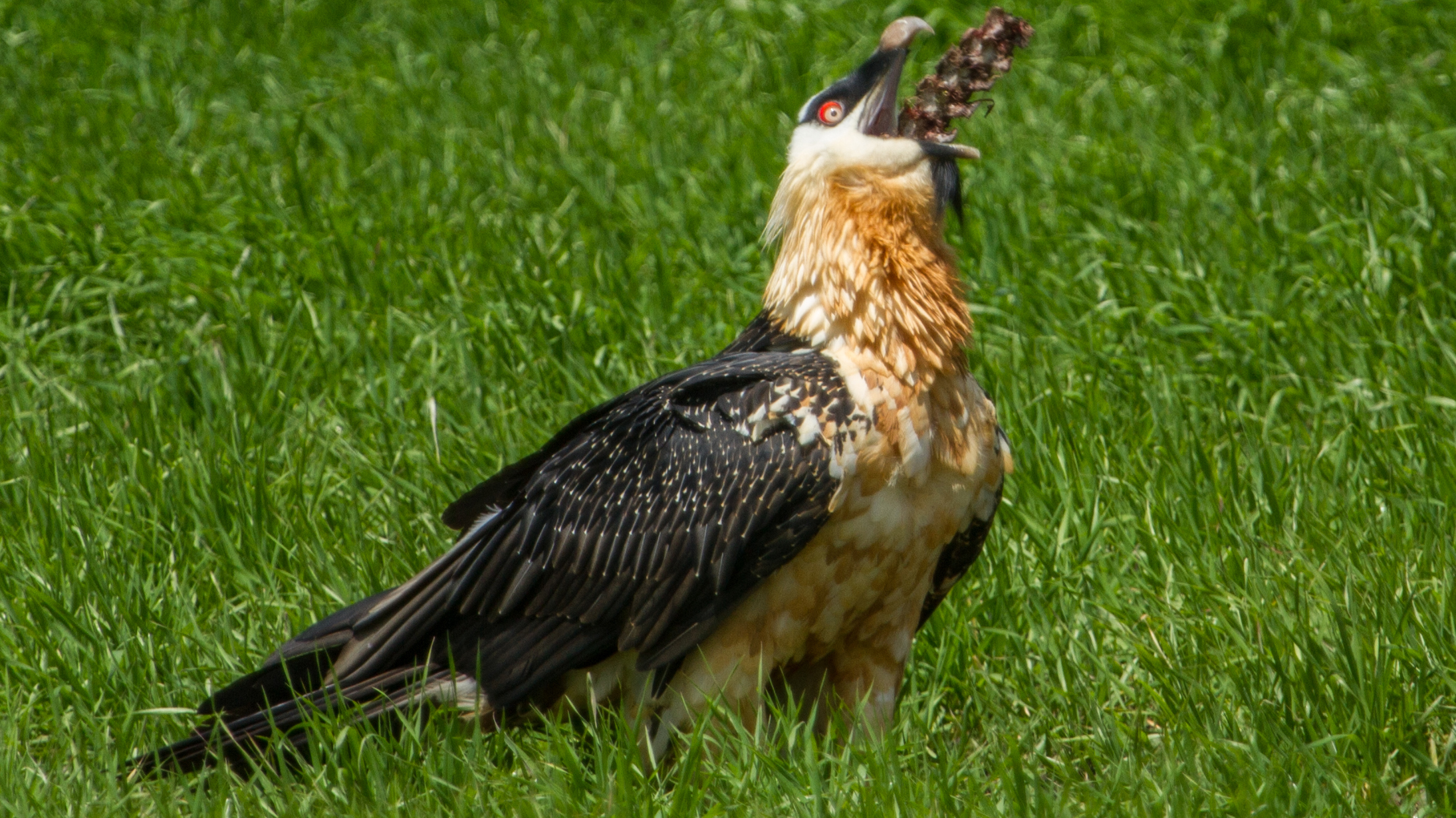
In contrast, feral dogs, rats and many other mammalian scavengers can carry these diseases and spread them to humans or livestock.
The association with death has given vultures an undeservedly bad reputation. Around the world, it’s time to turn that reputation around and spread the word that we must stop poisoning vultures now or it will come back to bite us.
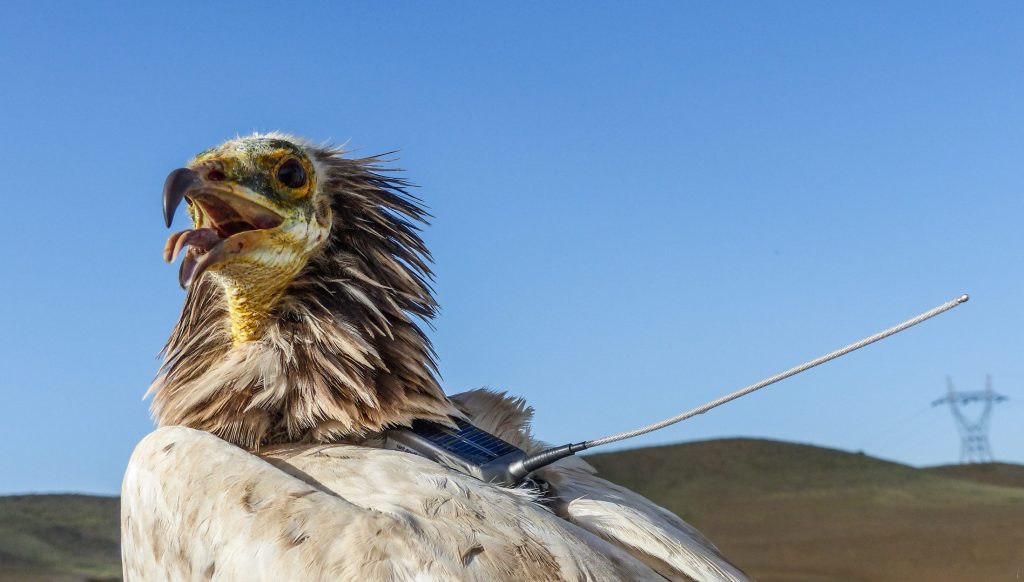

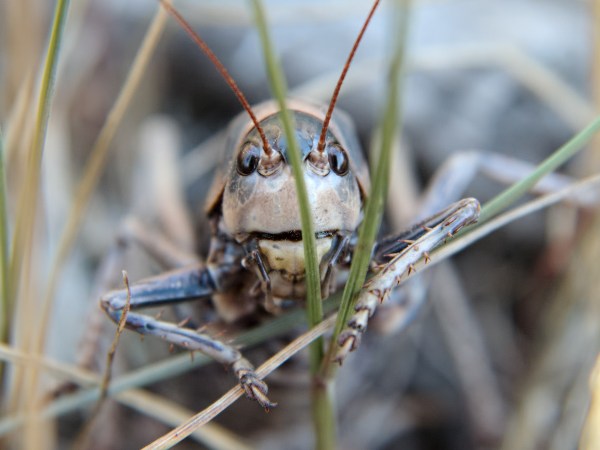
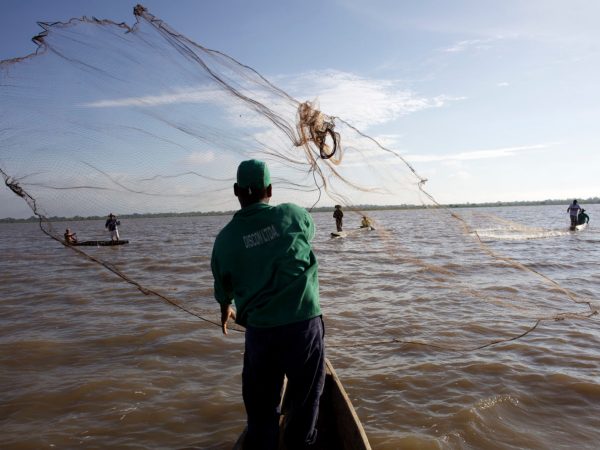
I respect vultures for who they are and how they look. They are sentient beings with families to take care of just like other birds. Unfortunately what they eat is gross but they help the planet. They have adorable babies they nurture and raise. We should love them for who they are and what they eat. I was watching a cartoon with my pet cockatiels that said they are nature’s clean-up crew! I love that cartoon. I have learned more about wild animals watching it. It’s called “Wild Kratts”. I am so glad there is something out teaching children and adults about how precious all animals are. The Tasmanian Devils are also part of nature’s clean-up crew, too!
Very interesting article! I live in N. Virginia and we occasionally see turkey vultures around here. I was particularly taken with the Bearded Vulture so I Googled it to see more images. I was astonished to see a lot of the photos showing very “reddish” beards and chests. Is this an actual variation of the Bearded Vulture, or did someone just get busy with PhotoShop? Thanks again for the article–and for all the work the organization does!!
Hi Linda, Thank you for the question! There was a recent story about how they smear red mud on themselves and use it as a kind of “makeup” to make themselves more attractive for breeding: http://www.bbc.co.uk/newsround/39945868
I enjoyed this article. It broadened my perspective on the plight of vultures.